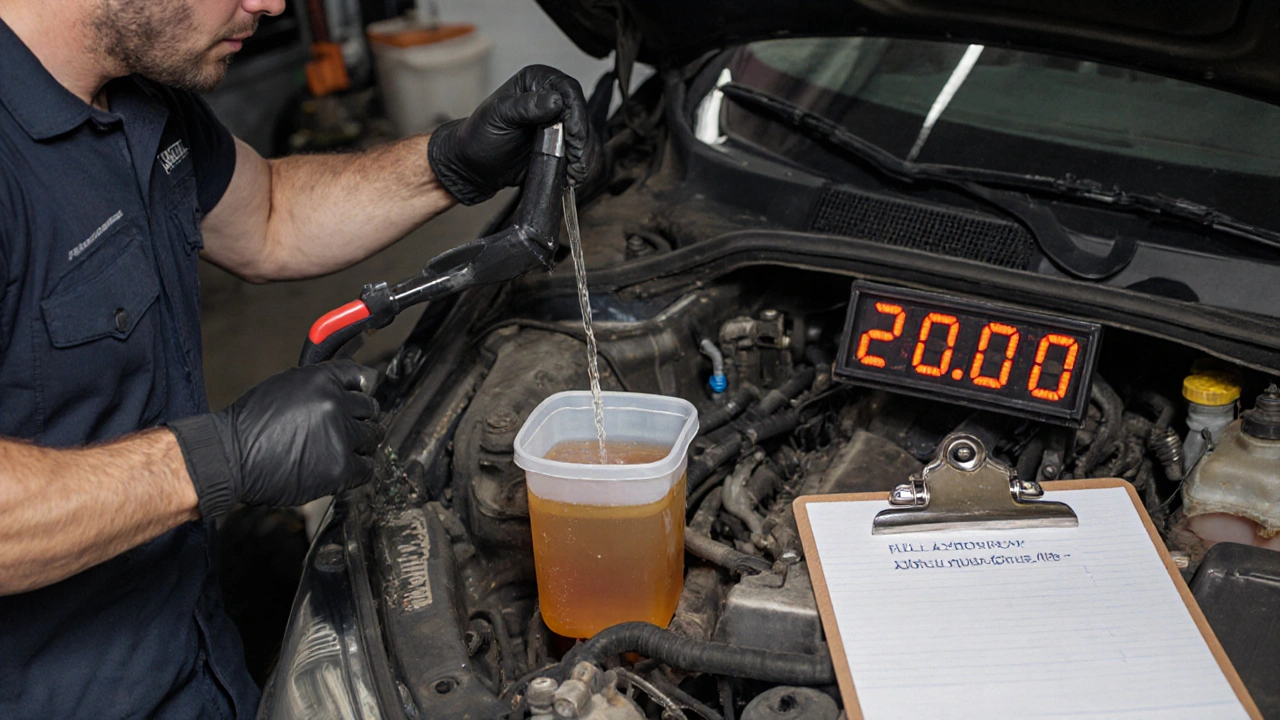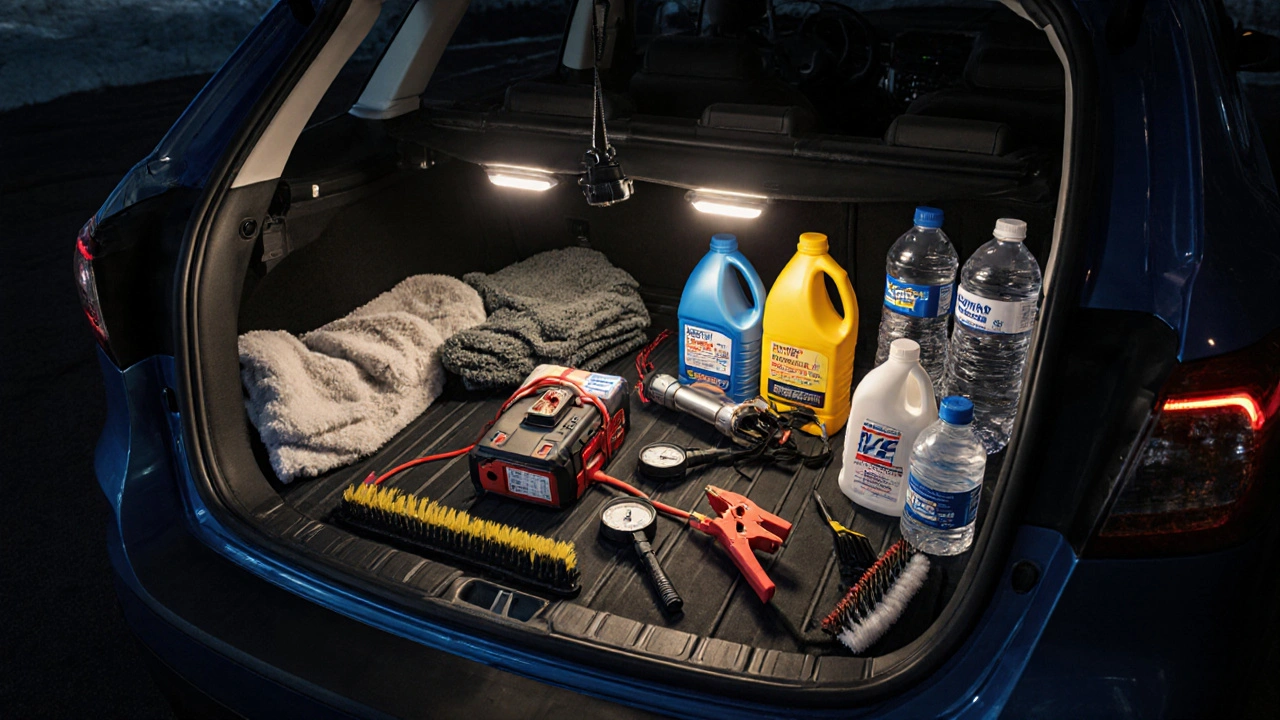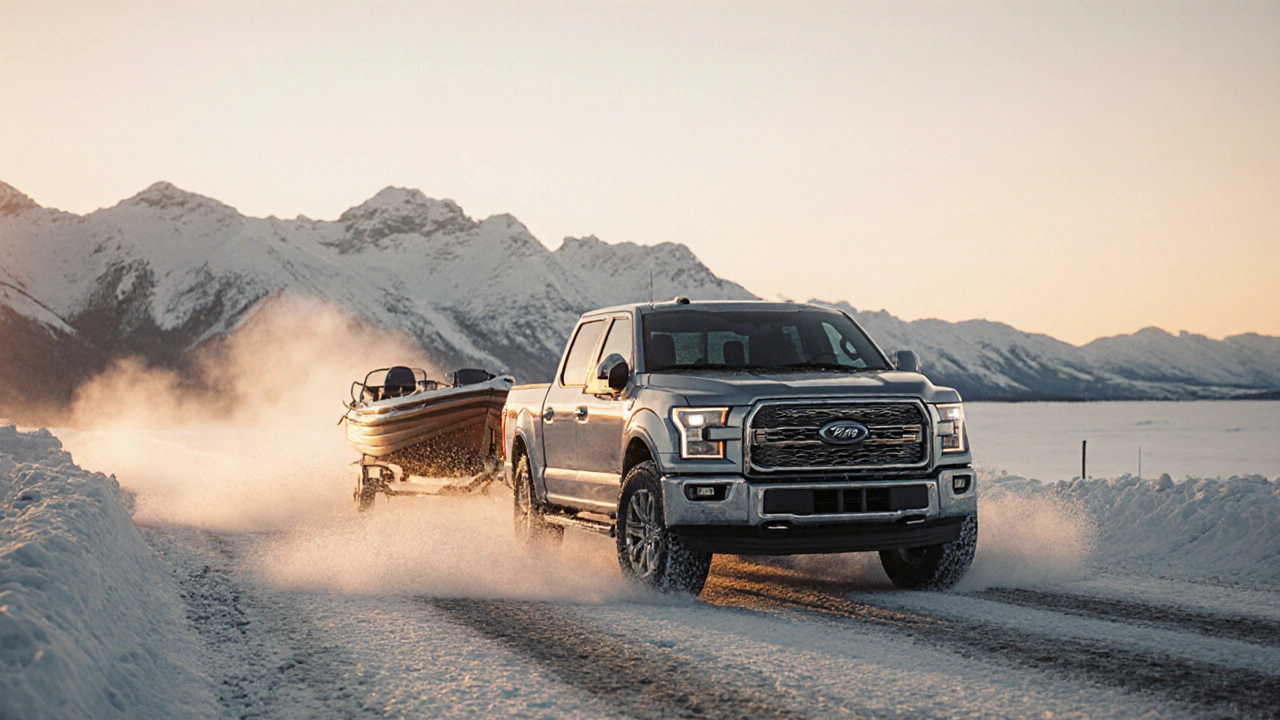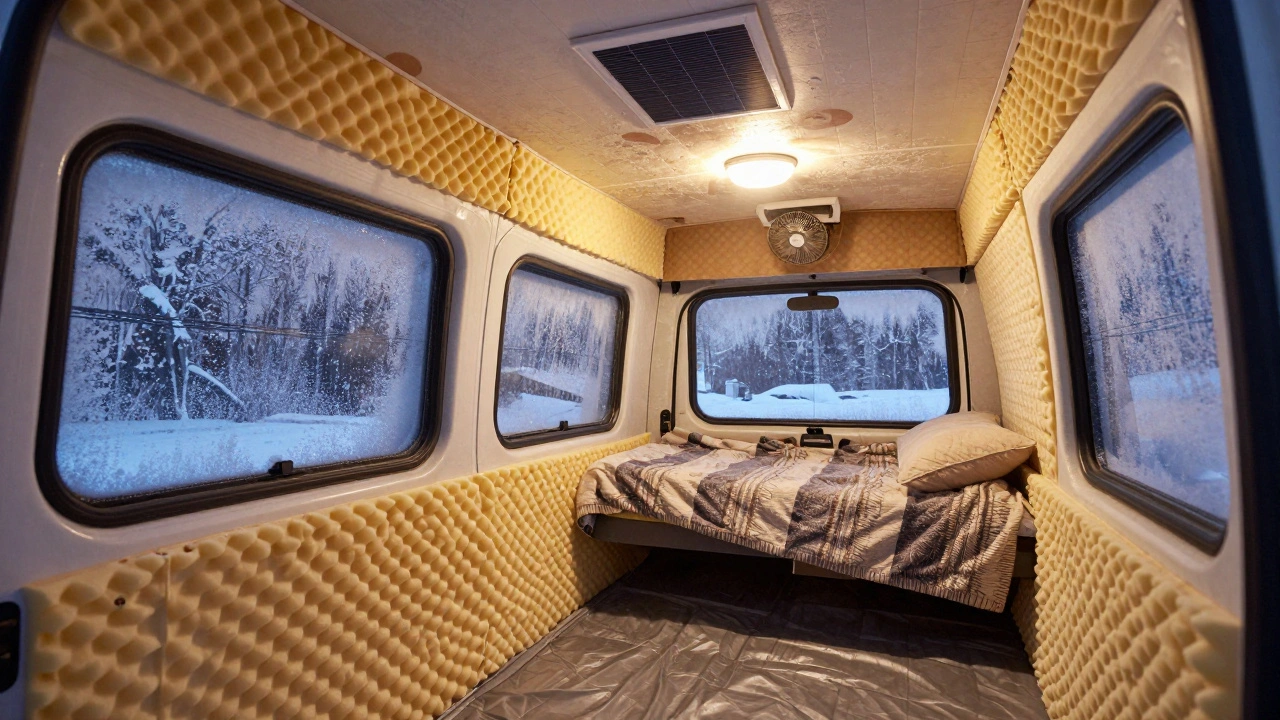Most people follow their car’s maintenance schedule like a checklist-oil change every 5,000 miles, tire rotation every 7,500, brake inspection at 15,000. But if you drive in severe driving conditions, that schedule is a fantasy. Your car isn’t just commuting to work. It’s towing through snowdrifts, crawling in stop-and-go heat, hauling gear over gravel roads, or idling for hours in traffic with the AC blasting. That’s not normal wear. That’s punishment. And if you keep treating it like it is, you’re setting yourself up for a breakdown in the middle of nowhere.
What Counts as Severe Driving Conditions?
Severe driving isn’t just about bad weather. It’s about how you use your car, day after day. The manufacturers list it in your owner’s manual, but most people skip past it. Here’s what actually qualifies:
- Driving in temperatures below 0°F or above 90°F for long periods
- Constant stop-and-go traffic, especially in hot cities
- Towing trailers, campers, or boats
- Driving on unpaved, dusty, or muddy roads
- Short trips under 5 miles, especially in cold weather
- Driving at high speeds on highways for extended periods
- Operating in high-humidity or salt-heavy coastal areas
If you do even one of these regularly, your car is working harder than the manufacturer assumed. And that means your maintenance intervals need to change. Not just a little. A lot.
Oil Changes: The First Thing You’re Doing Wrong
Most cars say “change oil every 7,500 miles.” That’s for highway cruising in mild weather. If you’re towing, idling in traffic, or driving in freezing cold, that number drops to 3,000-5,000 miles. Why? Because short trips don’t let the engine get hot enough to burn off moisture and fuel residue. That sludge builds up in the oil, and it doesn’t just sit there-it eats bearings, clogs filters, and gums up the valvetrain.
Use full synthetic oil. It handles heat and cold better, resists breakdown, and flows faster when it’s freezing. Don’t fall for the “10,000-mile oil” marketing. If you’re driving hard, that’s a gamble. Change it every 3,500-4,500 miles. Keep receipts. If you ever have to make a warranty claim, they’ll ask for proof you kept up with maintenance.
Transmission Fluid: Don’t Wait for the Warning Light
Automatic transmissions are especially vulnerable under stress. Towing, hauling, or crawling in traffic makes the fluid heat up way beyond normal. Heat breaks down the fluid, and once it does, the clutches inside start slipping. That’s not a repair you can ignore.
Under severe conditions, change transmission fluid every 30,000 miles-not 60,000. If you’re towing over 5,000 pounds regularly, do it every 25,000. And don’t just drain the pan. Have the fluid flushed properly so you’re replacing all of it, not just half. A transmission rebuild costs 5-8 times more than a fluid change. It’s not a savings. It’s a trap.
Brakes: More Than Just Pads
Stop-and-go traffic means your brakes are working constantly. Dust, mud, and salt from winter roads eat away at rotors and calipers. Brake fluid absorbs moisture over time, and that lowers its boiling point. When it boils, you get spongy brakes. That’s not a theory-it’s physics.
Under severe conditions:
- Inspect brake pads and rotors every 10,000 miles
- Replace pads before they hit 20% thickness
- Flush brake fluid every 2 years, no exceptions
- Check for corrosion on caliper slides and brake lines
Don’t wait for squealing. That’s already too late. If your brake pedal feels soft or you hear grinding, you’re damaging the rotors. And replacing rotors adds $300-$600 to your bill.

Air Filters and Cooling System: Don’t Ignore the Little Things
Driving on dusty roads? Your air filter clogs faster. A dirty filter doesn’t just hurt fuel economy-it makes the engine work harder, which raises temperatures and increases wear. Under severe conditions, replace the air filter every 15,000 miles, not 30,000.
Same with the cooling system. Overheating is the #1 cause of engine failure in harsh conditions. Coolant breaks down over time. It loses its anti-corrosion properties and its ability to transfer heat. Flush and refill the coolant every 30,000 miles, not 60,000. Use the type specified in your manual. Mixing coolants can cause gelling and blockages.
While you’re at it, check the radiator cap. A weak cap lets pressure escape, which lowers the boiling point of coolant. Test it with a pressure tester. If it’s not holding pressure, replace it. It’s a $20 part that can save you a $3,000 engine.
Tires: More Than Just Tread Depth
Tires under severe conditions don’t just wear down-they degrade. Constant heat, rough roads, and heavy loads stress the sidewalls and internal belts. Even if the tread looks fine, the tire could be failing.
Under severe driving:
- Check tire pressure every week-hot weather makes pressure rise, cold makes it drop
- Rotate tires every 5,000 miles
- Inspect for cracks, bulges, or sidewall damage monthly
- Replace tires every 5 years, even if tread looks good
Tire age matters more than you think. Rubber dries out. The belts separate. You won’t see it until it’s too late. If your tires are older than 5 years, get them checked by a pro. Don’t risk a blowout on the highway.
Electrical System: The Silent Killer
Short trips don’t give the alternator enough time to fully recharge the battery. Cold weather saps battery power. Heat cooks the internals. If you’re driving short distances in winter, your battery is dying slowly.
Under severe conditions:
- Test battery voltage every 6 months
- Replace battery every 3-4 years, even if it still starts the car
- Check terminals for corrosion-clean with baking soda and water
- Inspect alternator output with a multimeter
A dead battery in freezing weather means you’re stranded. And if you’re towing or using a lot of accessories-heated seats, defrosters, auxiliary lights-you’re draining it faster. Don’t wait for the car to not start. Test it.

What to Keep in Your Car
Even the best maintenance won’t stop every failure. Be ready. Keep these in your trunk:
- Extra engine oil and transmission fluid (1 quart each)
- Portable jump starter with USB ports
- Water and non-perishable snacks
- Blanket, flashlight, and first-aid kit
- Tire pressure gauge and portable air compressor
- Ice scraper and snow brush (even if you don’t get snow)
These aren’t luxuries. They’re insurance. If you’re stuck in a storm or stranded on a remote road, they can make the difference between a bad day and a disaster.
When to Skip the Dealer
You don’t need to go to the dealership for every service. Independent shops with ASE-certified mechanics can do the same work for less. Just make sure they:
- Use the right fluids and filters for your vehicle
- Provide itemized receipts with part numbers and service dates
- Know how to reset maintenance lights correctly
Dealerships have their place, but they’re not the only option. Find a trusted local shop. Ask around. Look for shops that specialize in your make. Read reviews that mention severe driving conditions. A good mechanic will ask you how you drive-not just what you drive.
Final Rule: Keep a Log
Write down every service. Date, mileage, what was done, who did it, and what parts were used. Use a notebook or a simple app. If you ever sell the car, this log adds value. If you need warranty coverage, this is your proof. If you’re ever in an accident or breakdown, this tells the tow truck driver and mechanic exactly what you’ve done to care for your vehicle.
Severe driving doesn’t mean you need a new car. It means you need to be smarter about maintenance. The difference between a car that lasts 200,000 miles and one that dies at 100,000 isn’t luck. It’s consistency. It’s paying attention. It’s doing the work when it’s inconvenient. That’s how you win.






Amanda Ablan
November 25, 2025 AT 21:45I used to ignore the severe conditions section until my transmission died on a mountain road. Changed everything after that-oil every 4k, fluid every 30k, brake flush every 2 years. No more surprises. Just plain common sense.
Also, that tire age tip? Lifesaver. My 4-year-old tires looked fine until one blew on a highway. Never again.
Meredith Howard
November 26, 2025 AT 21:35It is truly remarkable how many individuals overlook the manufacturer's own guidelines regarding severe driving conditions
One might assume that the owner's manual is a document of some importance yet it is frequently disregarded as though it were mere decorative text
The consequences are predictable yet entirely avoidable
Yashwanth Gouravajjula
November 28, 2025 AT 03:35In India, we know this well. Dust, heat, traffic jams-cars die fast if you treat them like taxis. Change oil every 5k. Check brakes every 8k. No excuses.
Kevin Hagerty
November 28, 2025 AT 22:44Wow someone actually wrote a 2000 word essay on oil changes
Did you get paid by Mobil 1 or is this just your personal fanfic
My 2005 Corolla has 200k miles on original fluid and it still runs like a dream
Maybe you just like spending money
Janiss McCamish
November 29, 2025 AT 20:20Kevin you're lucky your car hasn't died yet. That's not luck, that's a ticking time bomb.
Brake fluid absorbs water. Every. Single. Time. If you're not flushing it, you're driving with brakes that could fail at any moment.
And no, your '200k on original fluid' isn't a badge of honor. It's a warning sign.
Richard H
November 30, 2025 AT 08:15Y'all need to stop babying your cars. Back in my day we drove through blizzards with no heat, no A/C, and changed oil when it turned black.
Now everyone's got a spreadsheet for their transmission fluid like it's a damn spa day.
My Ford F-150 pulls 8k lbs through mud every week and I change oil at 10k. Still going strong.
Maybe your car's just not built tough enough.
Kendall Storey
December 1, 2025 AT 09:55Bro I’ve been doing this for 15 years hauling trailers across the Southwest. Here’s the real tea:
Full synthetic oil + oil filter with high bypass + 4k mile intervals = zero engine issues.
Transmission flush? Non-negotiable. If your fluid looks brown or smells burnt, you’re already 3 months behind.
And yeah, tire age > tread. I’ve seen too many blowouts from 6-year-old tires with 80% tread left.
Also, keep a portable air compressor. Saved me twice when a slow leak turned into a flat on a desert road.
Do the work. Your future self will thank you. No cap.
Ashton Strong
December 2, 2025 AT 20:29Thank you for this comprehensive and thoughtful guide. It is evident that you have dedicated considerable time and expertise to ensure that readers are equipped with accurate, actionable information.
Many automotive owners underestimate the cumulative impact of minor stressors-short trips, high heat, and salt exposure-on vehicle longevity.
Keeping a detailed service log, as you recommend, is not only prudent for warranty purposes but also fosters a deeper connection between owner and machine.
I encourage all readers to adopt these practices, not out of fear, but out of respect-for their safety, their investment, and the integrity of their vehicle.
With care, even the most demanding conditions can be met with confidence and reliability.